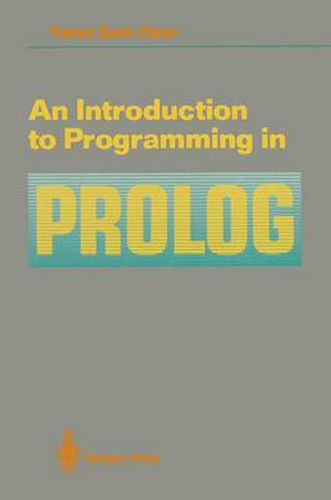Readings Newsletter
Become a Readings Member to make your shopping experience even easier.
Sign in or sign up for free!
You’re not far away from qualifying for FREE standard shipping within Australia
You’ve qualified for FREE standard shipping within Australia
The cart is loading…






This title is printed to order. This book may have been self-published. If so, we cannot guarantee the quality of the content. In the main most books will have gone through the editing process however some may not. We therefore suggest that you be aware of this before ordering this book. If in doubt check either the author or publisher’s details as we are unable to accept any returns unless they are faulty. Please contact us if you have any questions.
This book is an introduction to Prolog (GBPrQgramming in ~ic). It presents the basic foundations of Prolog and basic and fundamental programming methods. This book is written for programmers familiar with other programming languages, as well as for novices in computer science, willing to have an original introduction to programming. The approach adopted in this book is thus based on methodological elements together with some pragmatic aspects. The book is composed of two parts. In the fIrst part the major aspects of programming in Prolog are presented step by step. Each new aspect is illustrated by short examples and exercises. The second part is composed of more developed examples, which are often games, that illustrate major aspects of artifIcial intelligence. More advanced books are given in the bibliography and will allow the reader to deepen his or her know ledge of Prolog. Prolog was first designed in France at OJ.A., Marseille, with a specific syntax. We have adopted here a more common notation, defIned at Edinburgh, which tends to be an implicit norm. At the end of each chapter of the fIrst part, there are exercises that the reader is invited to do and to test on his or her machine. Complete answers are given in Appendix A, at the end of the book.
$9.00 standard shipping within Australia
FREE standard shipping within Australia for orders over $100.00
Express & International shipping calculated at checkout
This title is printed to order. This book may have been self-published. If so, we cannot guarantee the quality of the content. In the main most books will have gone through the editing process however some may not. We therefore suggest that you be aware of this before ordering this book. If in doubt check either the author or publisher’s details as we are unable to accept any returns unless they are faulty. Please contact us if you have any questions.
This book is an introduction to Prolog (GBPrQgramming in ~ic). It presents the basic foundations of Prolog and basic and fundamental programming methods. This book is written for programmers familiar with other programming languages, as well as for novices in computer science, willing to have an original introduction to programming. The approach adopted in this book is thus based on methodological elements together with some pragmatic aspects. The book is composed of two parts. In the fIrst part the major aspects of programming in Prolog are presented step by step. Each new aspect is illustrated by short examples and exercises. The second part is composed of more developed examples, which are often games, that illustrate major aspects of artifIcial intelligence. More advanced books are given in the bibliography and will allow the reader to deepen his or her know ledge of Prolog. Prolog was first designed in France at OJ.A., Marseille, with a specific syntax. We have adopted here a more common notation, defIned at Edinburgh, which tends to be an implicit norm. At the end of each chapter of the fIrst part, there are exercises that the reader is invited to do and to test on his or her machine. Complete answers are given in Appendix A, at the end of the book.